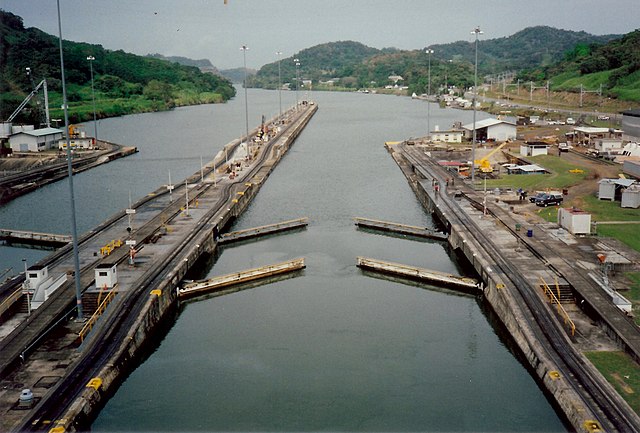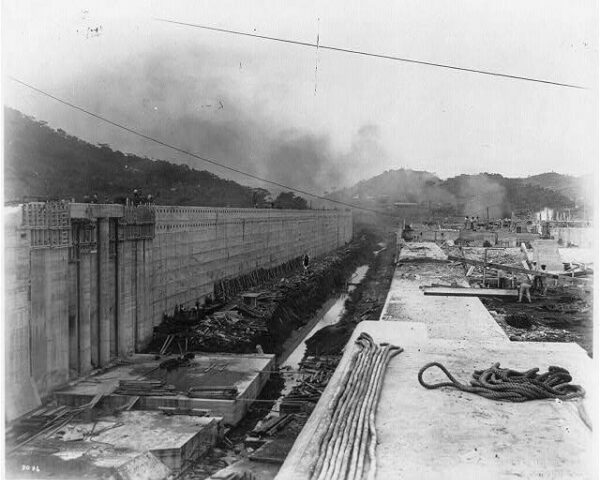On August 15, 1914, the world witnessed a monumental achievement in engineering and global trade with the official opening of the Panama Canal. The first vessel to navigate this vital new passage was the SS Ancon, a cargo ship that would forever be remembered as the symbol of a new era in maritime history.
The Panama Canal, a 50-mile (80-kilometer) artificial waterway cutting across the Isthmus of Panama, was designed to connect the Atlantic and Pacific Oceans, revolutionizing global shipping routes. Before the canal’s completion, ships were forced to take the lengthy and treacherous journey around the southern tip of South America, via Cape Horn. The construction of the Panama Canal was a colossal undertaking that had been envisioned by various explorers and engineers for centuries, but it wasn’t until the early 20th century that this vision became a reality.
The French initially began work on the canal in the 1880s under the direction of Ferdinand de Lesseps, the engineer behind the Suez Canal. However, the project was fraught with difficulties from the start. Harsh jungle conditions, the spread of diseases like malaria and yellow fever, and a lack of proper engineering knowledge led to the French efforts collapsing after years of struggle and the loss of thousands of lives. The dream of a canal linking the two oceans seemed all but dead until the United States took up the challenge in 1904.
Under the leadership of President Theodore Roosevelt, the U.S. undertook the Herculean task of completing the canal. The construction required massive excavation, the creation of the largest man-made lake of its time (Lake Gatun), and the development of an innovative system of locks to raise and lower ships across the varying elevations of the canal’s route. The project also involved implementing advanced medical practices and sanitation methods to combat the spread of disease among workers. These efforts drastically reduced mortality rates and allowed the work to progress.
After a decade of tireless work and at a cost of approximately $375 million (equivalent to nearly $10 billion today), the Panama Canal was finally ready. The SS Ancon, a 12,000-ton cargo and passenger vessel, was chosen to be the first ship to make the historic transit. Originally built as the Shawmut for the Boston Steamship Company, the Ancon had been acquired by the U.S. government during the construction of the canal and had played a significant role in transporting materials and supplies throughout the construction process.
On that momentous day, the SS Ancon set sail from the Atlantic side, entering the canal at Cristóbal, Panama, and making its way through the series of locks, including the famous Gatun Locks, which raised the ship 85 feet above sea level. The vessel then crossed Lake Gatun before descending through the locks on the Pacific side, emerging into the waters of the Pacific Ocean. The successful transit of the SS Ancon marked the official opening of the Panama Canal and demonstrated the canal’s capability to handle large vessels, setting the stage for its role as a critical artery in global trade.
The opening of the Panama Canal had profound implications for international commerce. It drastically reduced travel time for ships between the Atlantic and Pacific Oceans, cutting the journey by approximately 8,000 nautical miles. This not only made global trade more efficient but also solidified the United States’ position as a dominant force in world affairs, as the canal became a key strategic asset.
As we look back on the opening of the Panama Canal on August 15, 1914, and the transit of the SS Ancon, we remember a day that symbolized human ingenuity, perseverance, and the power of global cooperation. The Panama Canal remains a testament to the transformative impact of engineering and continues to serve as one of the most important waterways in the world.






